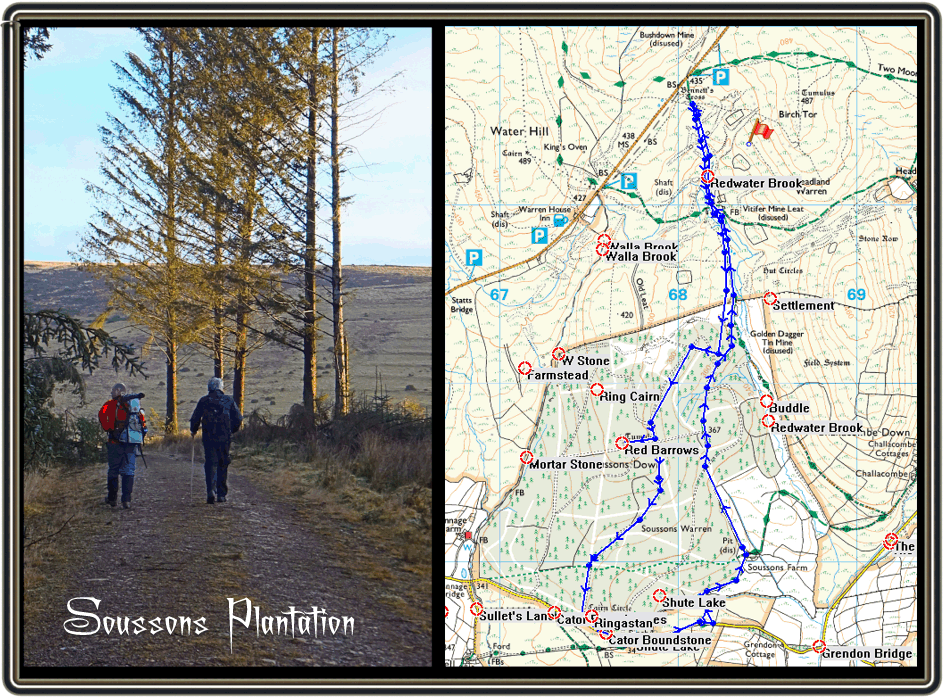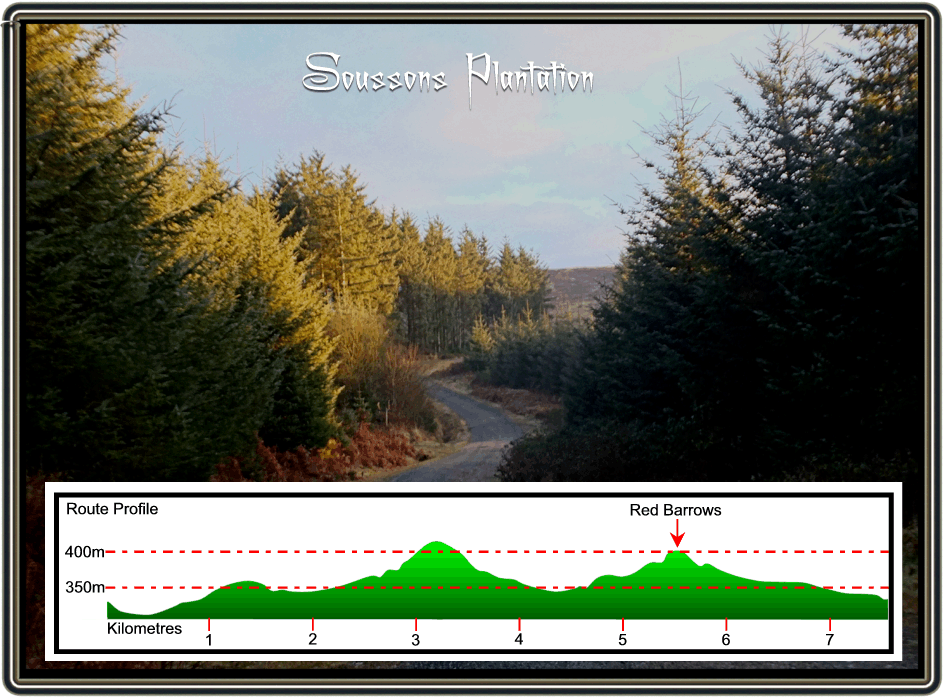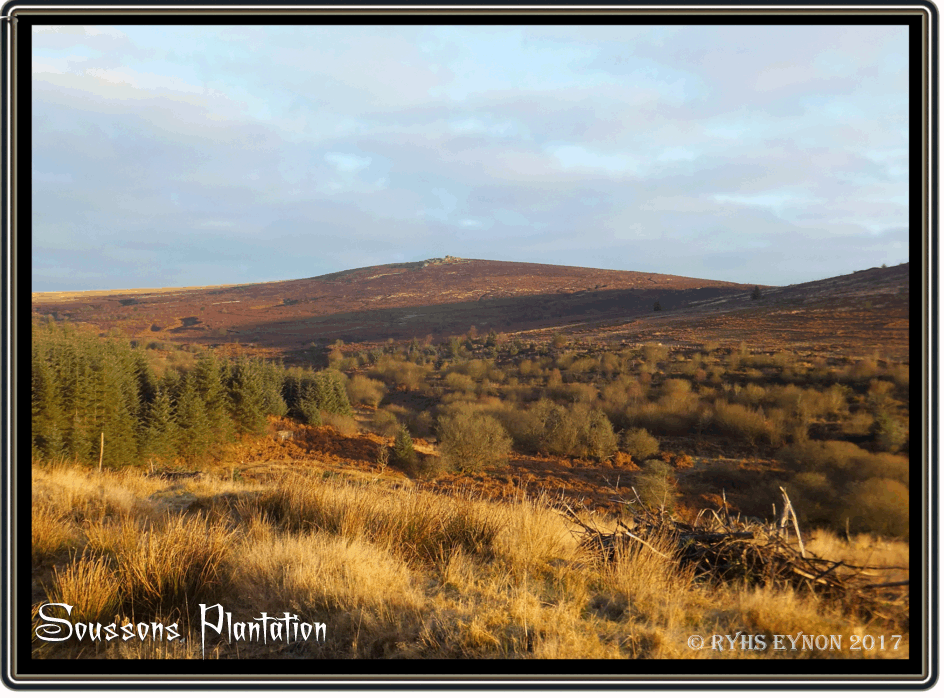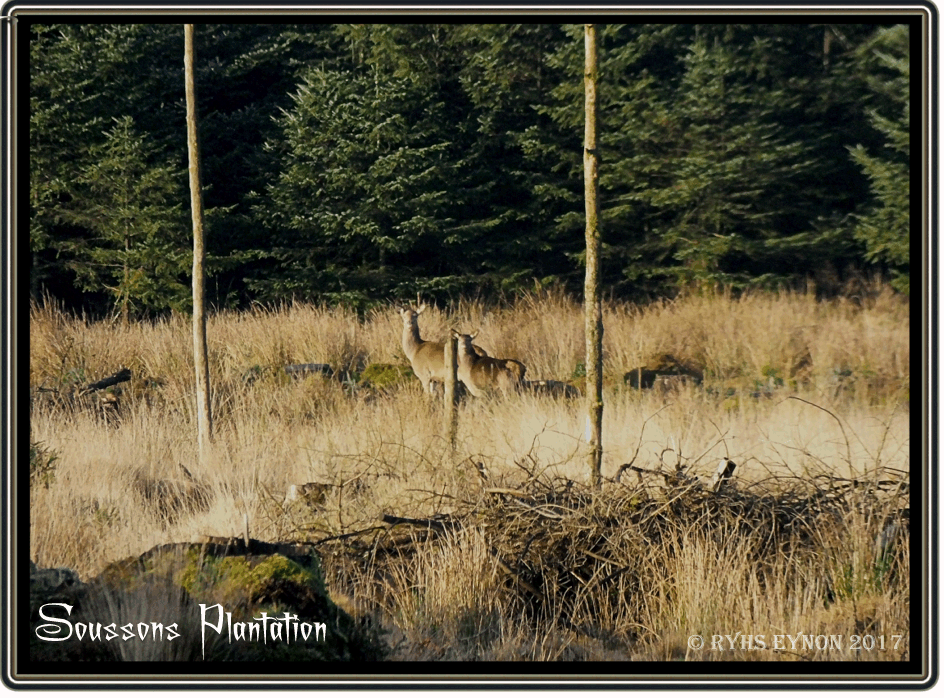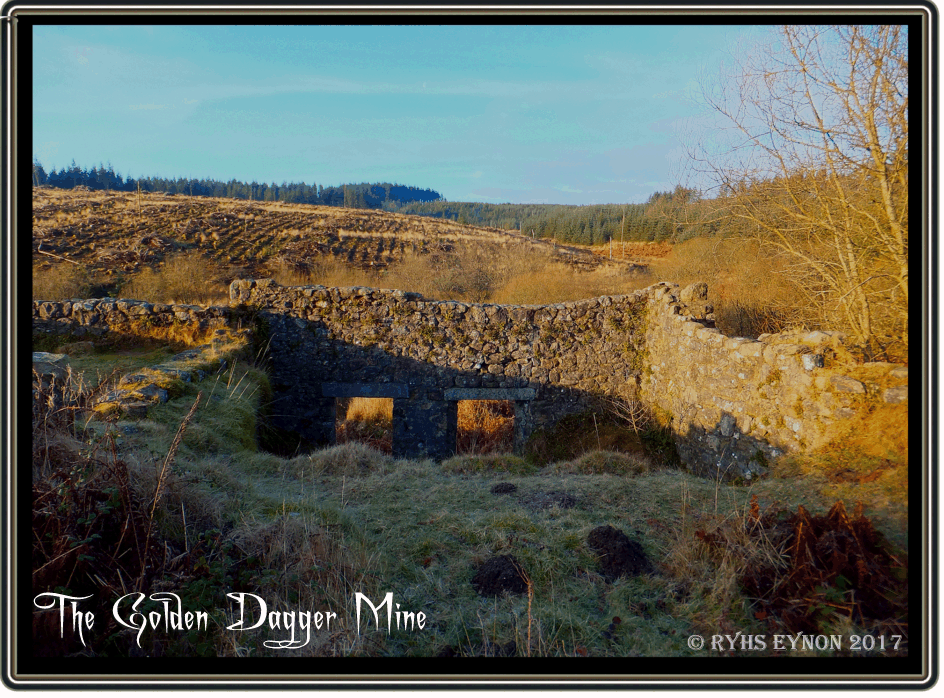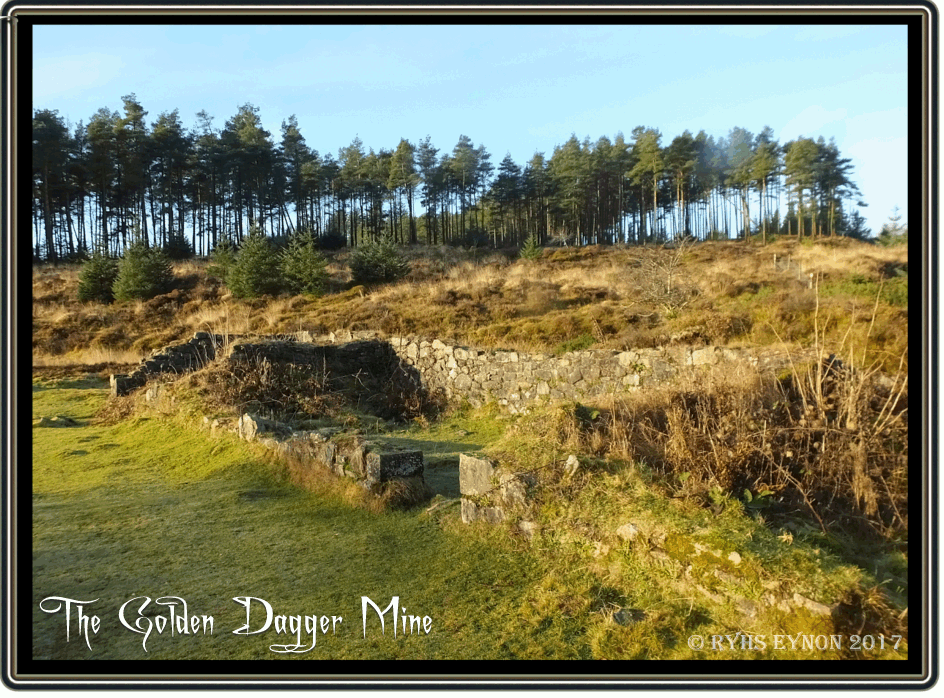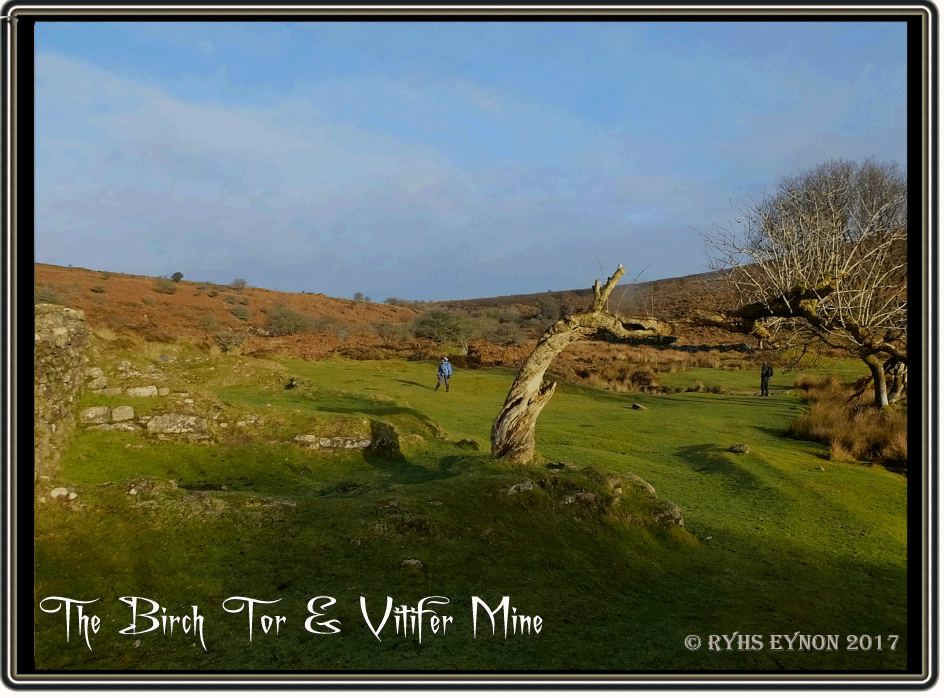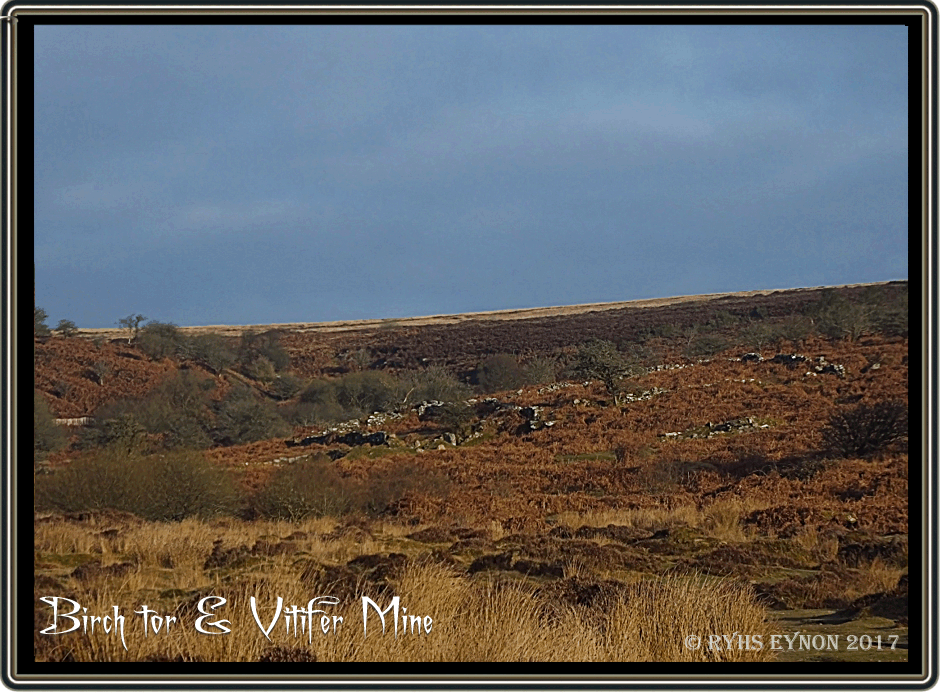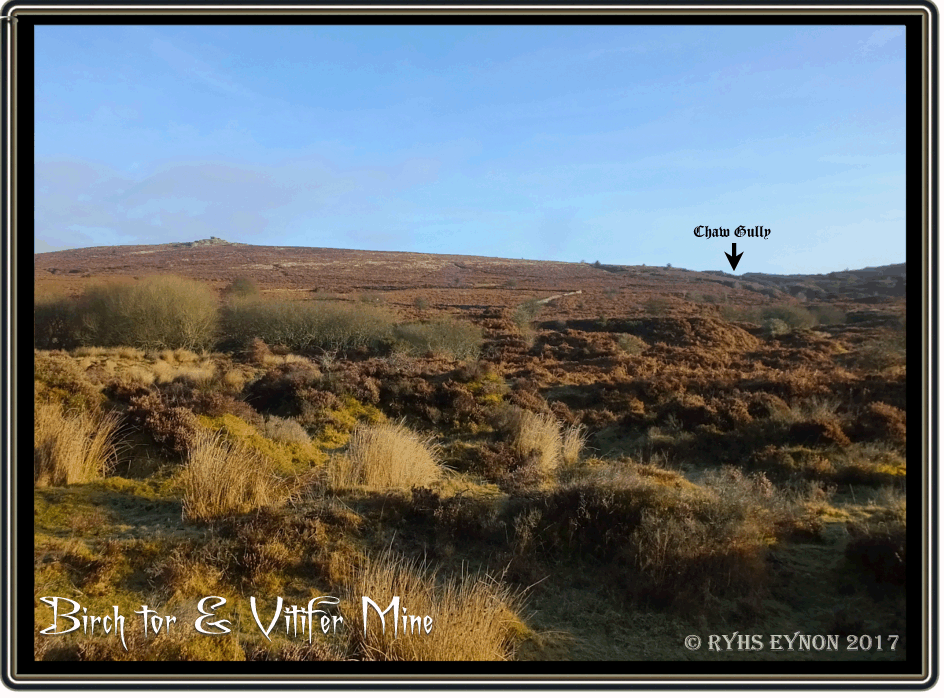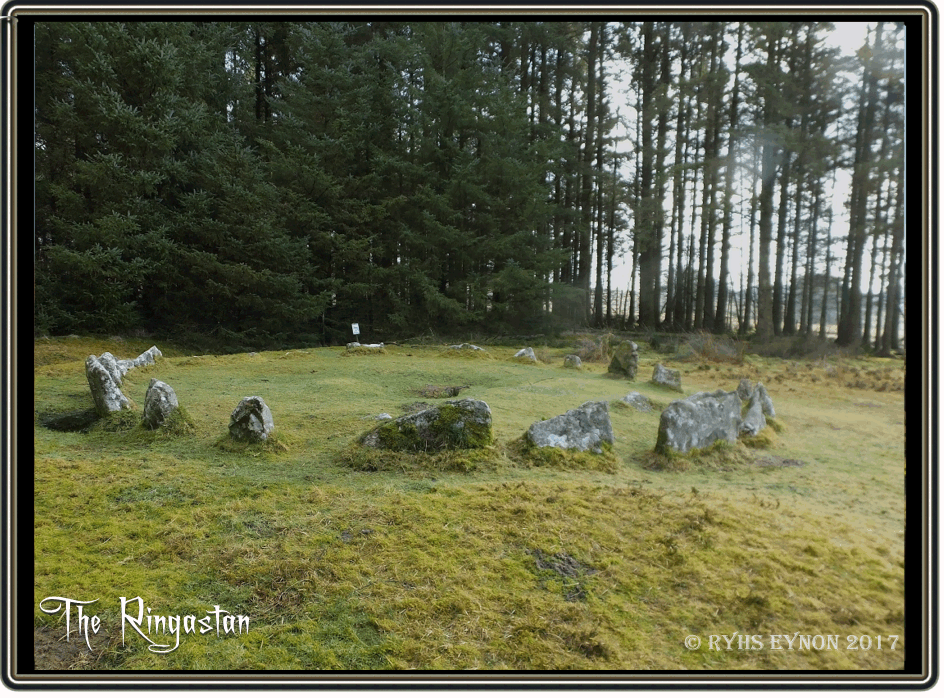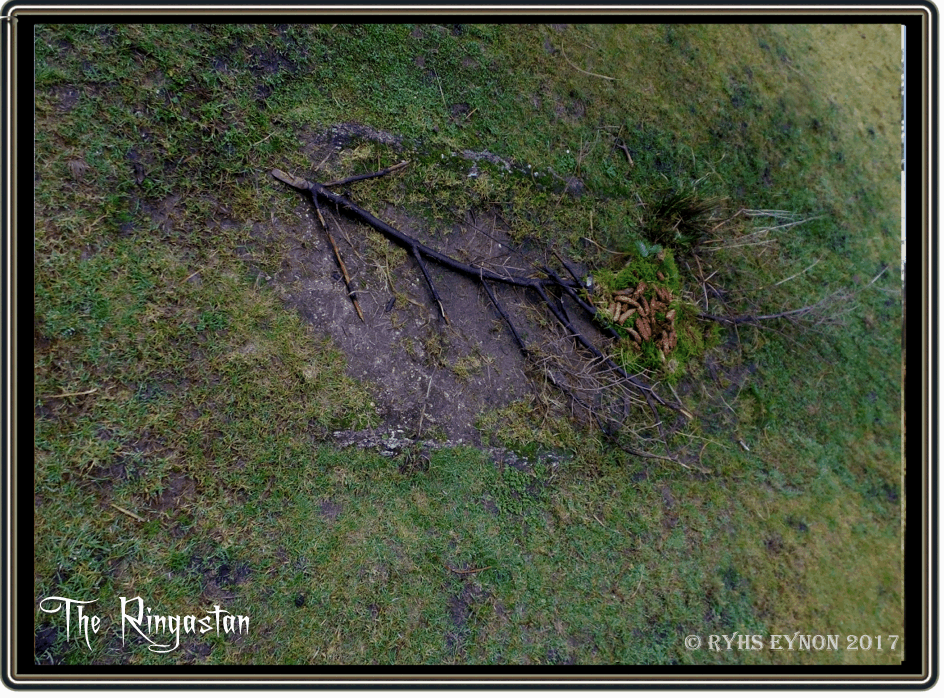
Plans are afoot to alter the landscape of Soussons Plantation so the idea was to have a stroll around the plantation before that happens. Another objective was to get some photographs of the three prehistoric barrows which nestle in a small clearing within the plantation, which I had never seen before. So, on January the 18th 2017 Louise, Rhys and myself arranged to set off from home at 6.00am to make the 100 odd mile pilgrimage down to Dartmoor. The day did not begin with the most inspiring start as despite taking pains to set the new fangled alarm clock on my mobile it never went off. Luckily at 5.45 am. I was awoken by the sounds of Rhys packing his car. Mad panic ensued and I just, by the skin of my teeth made it to their house at 6.00 am. Was this an ominous sign of things to come?
At about 7.00 am. we reached the small gateway at the east edge of the plantation, the air was crisp, the sky blue, and the ground frosty white, what more could one wish for? Having kitted up we set off on our journey of Xploration. Most of the way along the track we were accompanied by small flocks of Blue Tits excitedly flittering and twittering in the trees above not to mention solitary robins looking for their breakfast. Question – what do you call a flock of Blue Tits? Answer, I don’t think there is one, maybe a ‘Bra Full’ would be one suggestion? Anyway, onwards through Soussons we merrily went until the open moor suddenly appeared in all its russet glory. The sun was casting its shadow just below Birch Tor and over the nearest of the ‘Ace Fields‘, supposedly these were the playing cards that Jan Reynolds dropped whilst being whisked through the air by the Devil. As the cards fell to earth they miraculous transformed themselves into small walled enclosures, in truth they were small walled gardens the miners built to protect their crops from the Headland Warren rabbits. It was at that point that embuggerance number two struck, my camera battery went flat as the proverbial ‘witch’s mammary gland’. Never fear I had two more in my pocket, sad thing was despite being charged the day before they were flat as well. Apparently it’s an inherent fault with Fuji batteries and chargers which was really helpful when you are out on the moor. Luckily there was no problem with Rhys’ camera and he obligingly stepped in as the Legendary Dartmoor photographer for the day. Just as we reached the point in the track that overlooks the ruined building known as ‘Dinah’s House’ we spotted a fairly large herd of Roe Deer who immediately darted back into the trees, luckily two of the herd remained for a few seconds to pose for Rhys’ camera as can be seen below. This sighting was fantastic as we had seen several deer slots in the mud but did not think we would be lucky enough to see the actual animals that made them.
Although not originally planned we decided as we were so close to go and have a mooch around the old workings of the Golden Dagger mine. It must have been a good few many years ago since I was last there, on that occasion went went down the main adit which from what I recall was very wet and very precarious. Whole books have been written about the Golden Dagger mine and the subject is far to big to include here but a lot of information can be found on the Pastscape website – HERE. So I was explaining what features were to be seen and made a great thing about the ‘buddle’ being a not to be missed artefact. It was a short drop down from the plantation track to an old walled in shaft which had the mysterious figure 6 marked on it. Presumably there is somewhere a guide to the old workings as many other of the remains turned out to have numbers marked on them? The next port of call were the ruins known as ‘Dinah’s House‘ which in fact was once the mine captain’s house and office. Who was Dinah? Quite possibly a woman known as Dinah Hext who was living there in the 1860s and 1870s, previously the building was known as ‘Stamps Cottage’, Greeves, pp. 93 -94. Hemery notes that the building had seen a lot of sadness over the years, a previous mine Captain, John Webb lost his infant son who tragically drowned in the nearby Redwater Brook. A later mine captain, John James Coaker died in the building shortly after retiring from his hard labours at the mine. From Dinah’s House we paddled up the track, or was it a stream? No it was definitely a track with a copious amount of water flowing down it, to the ruins of what was the old ‘miner’s dry’. This was where the miners would dry their sodden clothes after a day working at the mine. Further up from the miner’s dry we came across the remains of what once once the carpenter’s shop, blacksmith’s shop and another dry along with its iconic tree which looks as if it has a chronic case of the rheumatics. These buildings belonged to what was the Birch Tor and Vitifer Mine Vitifer Mine which was first worked in the 1750s right up to the 1920s. There are reports that during the 1830s conditions at the mine we appalling, so much so that ‘scores’of miners were killed through working underground in bad air, Greeves, p.58. Close by to these ruins are the remnants of what were once the ancillary buildings associated with the mine; the kitchen, dormitory and canteen.
Sitting high above the mine ruins is the unmistakable notch in the skyline which is the old mining gert known as Chaw Gully, AKA in the letterboxing community as ‘Valley of Jawbones’. Chaw Gully is where the boundaries of two tin mines met: the East Birch Tor Mine and the Vitifer Tin Mine, later to become the Birch Tor and Vitifer Mine. There is an old legend that at the bottom of a deep shaft in Chaw Gully lies a hoard of gold which is protected by a raven. On numerous occasions, intrepid miners have been lowered down into the dark, dank shaft in search of the gold. As soon as they started their ascent the old raven would croak and caw a warning from his lookout and those stood above would see a gnarled hand holding a knife appear. It would then slowly start cutting through the fibres of the rope until with a twang it would break and the unfortunate soul suspended below would be sent plummeting to his death. In the morning the broken remains of his body would be found laid out on the heather beside the shaft, the old raven looking menacingly down and the jackdaws cackling and cawing in amusement.
Having searched high and low for the elusive buddle it was decided to move further up the valley’s head which took us to where the numerous maze-like gullies criss-cross the landscape – sadly still no buddle so we headed back to the plantation. On the way back Louise and Rhys asked for a coffee stop ta the old carpenters house which seemed a bit odd. Then to my surprise they produced a birthday card and cake along with a bottle of wine – big thank you both for a very kind thought. A photograph was taken of the presentation but I won’t put it here as it truly reflects my age. Having made our way back up to the plantation we headed towards Red Barrows which was a primary objective of the day. Now Red Barrows are a collection of prehistoric barrows and today do not reflect their importance. In fact you could say that after a day tramping around the moor they are a huge disappointment but things are not as they always seem. Red Barrows consist of four Bronze Age round barrows all of which are now scheduled monuments. In 1902 the Dartmoor Exploration Committee of the Devonshire Association ‘explored’ the three barrows. During the excavations they discovered fragments of charcoal, burnt bone, flint flakes, a piece of human skull and a pottery sherd. It was thought at the time that most of the stones used to build the cairns were removed, possibly to build the nearby walls. I did, as you can see below, manage to get a half decent photo from my Iphone which makes a change.
From Red Barrows we headed back down the track to the next Bronze Age feature to be found in the area. I like to call it the Ringastan or the Seven Stones but many others refer to the cairn circle as Soussons Stone Circle. Being so close to the road this monument gets a lot of visitors and in past years the central kist has received attention from pagans carrying out Halloween rituals and lighting fires, hence the reason the pit has been filled in. But as seen below it still gets visits from folk leaving tokens, heavens knows what this one was meant to symbolise? From the cairn circle it was a short trundle back to the car, passing an old Cator manor boundstone on the way.
The crisp moorland air had certainly given us an appetite and thirst so it was decided to call in at the Warren House Inn for some well deserved refreshment. Every time I visit here I always have to smile at the low benches in the beer garden. Many years ago a letterbox clue referred to the ‘Four Lions’ which had everyone puzzling where they were for ages, eventually it was revealed that the ‘Four Lions’ are the small stone lions that support the benches. Having ordered some drinks and lunch we settled down beside a quietly smouldering fire, no longer burns the supposed peat fire that has not been extinguished for centuries. Soapbox Time – now I don’t know why some landlords have to be so rude to guests that are no locals, their money must be as welcomed as anyones. But having ordered a second glass of cider it was found to be flat, and I mean flat, flat as a witch’s mammary gland. On asking for it to be changed the barman had to consult the landlord who after disappearing into the cellar returned and said there was nothing wrong with the cider, it must be the glass? A refill was then smacked down on the bar and the man shot off. Sorry there was nothing wrong with the actual glass it was probably down to the lack of cleaning or over cleaning of it. Mental note – don’t bother visiting again, for the price the food was nothing special anyway.
When I got home the wife asked how far we had walked? “No idea,” I replied, on taking up my Iphone she dug deep and found a hidden health monitor which I thought I had deleted. Apparently not because according to my fitness monitor I walked 12, 757 steps which equated out to 7. 57 kilometres – Jesus, stalking or what? What about the buddle I hear you ask, well having got home I was eager to see how we had missed the buddle. Simple don’t rely on what you think you saw twenty odd years ago, it transpired that had we walked a few hundred yards further past Dinah’s House we would have met one of the buddles. Even more annoying we had spotted what looked like and information sign from the Soussons Track above as we descended to the mine workings. Finally, as much as it pains me to say, if you would like a lot more information on the Golden Dagger and Birch Tor and Vitifer Mines then the book mentioned below gives a good insight to their history, albeit at the cost of £16.

Greeves, T. 2016. Called Home – The Dartmoor Tin Miner. Truro: Twelve Heads Press.
 Legendary Dartmoor The many aspects past and present of Dartmoor
Legendary Dartmoor The many aspects past and present of Dartmoor

